Lakshadweep, a tropical archipelago of 36 atolls, islands and coral reefs in the Arabian Sea, is often celebrated for its sun-kissed beaches and turquoise waters.
The island comprises smaller islands of Amini, Kavaratti, Andrott, Kalpani, Agatti, Kittan, Chetlat, Minicoy, Bitra, and Kadmat.
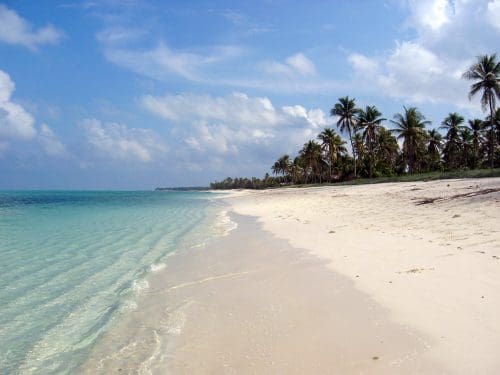
However, there’s much more to this Indian Union Territory than its postcard-perfect scenery. In this travel exploration, we discover the lesser-known aspects of Lakshadweep, uncovering its rich history, vibrant culture, and unique experiences that escape most itineraries.
Lakshadweep, translating to “a hundred thousand islands” in Malayalam, is not just a name but a poetic tribute to its sprawling beauty. This archipelago, India’s smallest Union Territory, is a spectacular cluster of islands located off the southwestern coast of Kerala in the Arabian Sea.
The atolls, with their sandy beaches and lush green landscapes, span over an area of just 32 sq km, yet their geographical spread covers about 78,000 sq km of the Arabian Sea. This disparity between land and aquatic territory adds to the mystique of Lakshadweep, making it a place where land, sea, and sky merge in a dazzling display of nature’s artistry.
Originally known as the Laccadive Islands, this archipelago was renamed Lakshadweep Islands in 1956 when it became a Union Territory. The inhabitants of the Amindivi and Laccadive groups of islands have cultural ties with the coastal communities of Kerala. In contrast, those living in the Southern Minicoy Islands exhibit cultural parallels with the people of The Maldives, even sharing the Mahl language.
The islands are celebrated for their sun-kissed, white sandy beaches and the crystal-clear turquoise waters that surround them. But the true essence of Lakshadweep’s charm lies in its remarkably preserved natural state. Unlike many popular tourist destinations, these islands have remained relatively untouched by the heavy footprints of industrialization and commercial tourism. This unspoiled quality not only ensures an authentic experience for visitors but also plays a crucial role in preserving the delicate marine and terrestrial ecosystems.
Cultural Mosaic
Originally known as the Laccadive Islands, this archipelago was renamed Lakshadweep Islands in 1956 when it became a Union Territory. The inhabitants of the Amindivi and Laccadive groups of islands have cultural ties with the coastal communities of Kerala. In contrast, those living in the Southern Minicoy Islands exhibit cultural parallels with the people of The Maldives, even sharing the Mahl language.
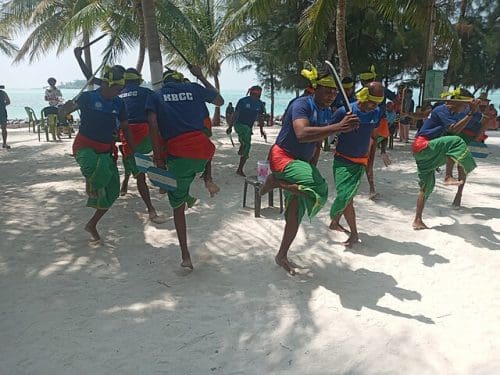
The islands‘ history is as fascinating as their landscapes. Archaeological evidence suggests that human settlement existed in the region during the Mesolithic period. Folklore is rich and intertwined with the sea; tales of sea spirits and mythical creatures abound, shaping much of the local culture and traditions.
The human element of Lakshadweep is as fascinating as its natural beauty. The islands are home to a small but diverse population, predominantly Muslim, with their culture being a blend of South Indian and islander influences. The local language is Malayalam, with each island having its unique dialect and traditions. The art and craft scene is modest but meaningful. Items made from coconut shells, coral, and oysters are popular. Traditional Minicoy sailboats, known as “Jahadhoni,” are a testament to the exceptional craftsmanship.
The lifestyle here is a reflection of the simplicity and purity of the islands, with communities leading a life that is deeply connected to the sea and their environment. The sense of community is strong, and guests are often treated with great hospitality.
Lakshadweep’s administration has been commendably proactive in adopting eco-friendly practices to protect its fragile ecosystems. Plastic is banned across the islands, and there is a significant emphasis on sustainable tourism. This not only helps preserve the pristine condition of the islands but also educates and encourages visitors to be mindful of their environmental impact.
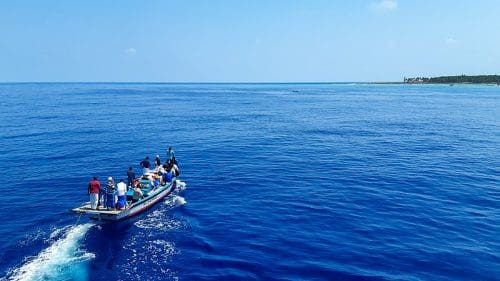
A World of Vibrant Marine Biodiversity
Lakshadweep’s coral reefs, often referred to as the underwater rainforests of the Indian Ocean, are a pulsating heart of marine biodiversity. These complex ecosystems, integral to the identity of the islands, rank among the most dynamic and vibrant in the world. The reefs are home to an astonishing variety of marine life, ranging from tiny, colourful reef fish to larger, majestic sea creatures.
These reefs host a kaleidoscope of marine species, each playing a vital role in maintaining the ecological balance. Among them are several species of fish, including the clownfish, famously known for its vibrant orange and white stripes, and the parrotfish, whose vivid colours mirror the hues of the corals they inhabit. The waters are also home to graceful sea turtles, gliding through the reefs and occasionally coming ashore to nest on the island’s beaches.
The coral formations themselves are a spectacular sight. They come in a myriad of shapes, sizes, and colours, from deep reds and purples to bright yellows and greens. These living structures are not just visually stunning; they provide critical habitats for countless marine organisms and play a significant role in protecting the shoreline from erosion.
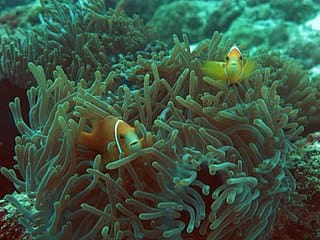
Lakshadweep’s commitment to conservation is evident in the pristine condition of its reefs. The local authorities, along with various environmental organizations, have implemented measures to protect these delicate ecosystems. This includes regulating fishing activities, restricting the use of harmful substances, and promoting eco-friendly tourism practices.
Furthermore, Lakshadweep’s coral reefs are not just a destination for leisure. They provide a valuable educational experience for visitors, offering insights into the importance of marine conservation and the role of coral reefs in our ecosystem. Interactive experiences, such as guided snorkelling tours with marine biologists, add an informative dimension to the adventure, enriching visitors‘ understanding of these complex ecosystems.
As a sanctuary for marine life and a beacon for conservation, Lakshadweep’s coral reefs invite us to dive deep, not just into the waters, but into a greater understanding of our planet’s precious marine environments.
A Haven for Divers and Snorkelers
For snorkelers and divers, Lakshadweep offers an unparalleled opportunity to explore these underwater wonders. The clear waters provide excellent visibility, revealing the intricate details of the coral formations and the vibrant marine life that inhabits them. Diving into these waters is like entering a different world, where every dive site tells a different story and every nook of the reef presents a discovery. Scuba Diving is best on Kalpeni Islands. As a matter of interest, the PADI certificate for scuba divers is conducted only at Kadamat island.
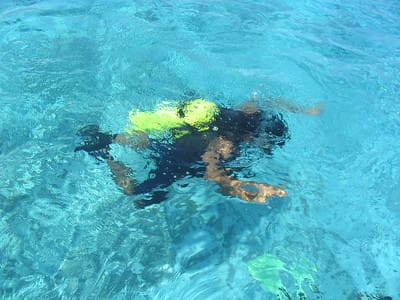
Serene Backwaters and Hidden Channels:
The islands of Lakshadweep are surrounded by calm lagoons and intricate networks of backwaters, making them ideal for kayaking and canoeing. Canoeing is best done in the Minicoy Islands. These activities offer a serene yet adventurous way to explore the less accessible parts of the islands. Paddling through these tranquil waters, visitors can discover hidden beaches, secluded coves, and mangrove-lined channels that are not reachable by larger boats.
Kayaking and canoeing are also eco-friendly ways to explore the islands. Renting a yacht or a kayak from Kavaratti island which is one of the the most developed islands in Lakshadweep is a good idea. Kayaking and canoeing allow visitors to be up close with nature without disturbing the delicate marine environment. It’s an opportunity to experience the islands’ natural beauty in its most pristine form.
Deep Sea Fishing: An Angler’s Adventure
Deep sea fishing in Lakshadweep is a thrilling adventure, offering the chance to catch a variety of game fish, including Barracuda and Sailfish. These waters are rich in marine life, providing an exciting challenge for both novice and experienced anglers.
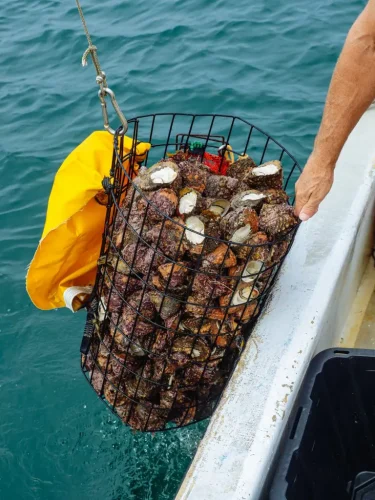
Guided fishing trips are available, offering the expertise of local fishermen who know the best spots and techniques to catch these prized fish. These excursions are not just about the catch; they’re about learning the local fishing culture and the sustainable practices that are part of responsible fishing.
Glass-Bottom Boat Rides: A Window to the Underwater World
Glass-bottom boat rides offer a unique way to observe the vibrant marine life of Lakshadweep without getting wet. These boats, equipped with transparent bottoms, provide a clear view of the underwater world beneath the surface.
As the boat glides over the coral reefs, visitors can marvel at the kaleidoscope of marine life, including colourful fish, coral formations, and sometimes even sea turtles. It’s an ideal activity for those who prefer a more relaxed way to experience the underwater beauty of the islands.
These boat rides often come with guides who provide valuable insights into the marine ecosystem, making it an educational experience as well as a visual treat.
Sightseeing Beyond the Obvious:
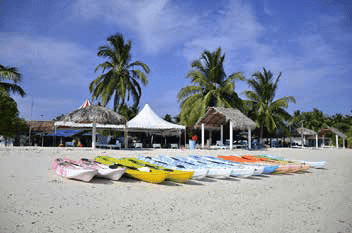
Kavaratti Island: A Blend of Spirituality and Artistry
Ujra Mosque: A Testament to Craftsmanship:
Kavaratti, the capital of Lakshadweep, is not only the administrative hub but also a cultural treasure trove, with the Ujra Mosque as its crown jewel. This mosque is renowned for its stunning architecture, especially its ceiling, which is a masterpiece of intricacy and craftsmanship. The legend goes that the entire ceiling was carved from a single piece of driftwood, a testament to the artistic skills and resourcefulness of the local craftsmen. Visitors to the mosque are often awestruck by the delicate carvings and the spiritual ambiance that resonates within its walls.
Marine Aquarium and Hatchery:
Additionally, Kavaratti is home to a Marine Aquarium and Hatchery, which offers a glimpse into the diverse marine life of the region. This facility plays a crucial role in conserving and propagating marine species, particularly sea cucumbers and clownfish.
Minicoy Island: A Matriarchal Society and Tuna Heritage
Cultural Anomaly:
Minicoy, the southernmost island of the archipelago, stands out for its unique cultural characteristics. It’s known for its matrilineal society, a rare societal structure where lineage and inheritance are traced through women. This societal model influences every aspect of life on the island, from property ownership to family dynamics, offering a fascinating contrast to the patriarchal norms prevalent in many parts of the world.
Tuna Canning Factory:
The Tuna Canning Factory in Minicoy is a must-visit for those interested in the local economy and traditional industries. Here, visitors can observe the process of tuna canning, a practice that is not only economically significant but also a part of the island’s cultural heritage. The factory is a window into how the island community harmoniously blends its economic activities with environmental conservation.
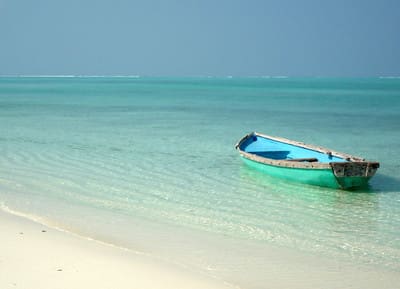
Lighthouse of Minicoy:
Another significant landmark on Minicoy Island is its majestic lighthouse. Built by the British in 1885, the lighthouse offers a panoramic view of the island and the surrounding turquoise waters.
Jahadhoni, a classic racing event:
The island of Minicoy is renowned for its heritage of constructing boats. Notably, it is the birthplace of the Jahadhoni, a classic racing boat. Each year, the National Minicoy Fest is celebrated, where expert rowers from across Lakshadweep gather to participate in thrilling boat racing competitions.
Agatti Island: Serenity and Natural Beauty
A Glimpse into Island Life: Agatti Island, although small, is an embodiment of the tranquil and unspoiled beauty of Lakshadweep. The island is famed for its stunning lagoon, which is not only a visual delight but also a hotspot for various water sports.
Kayaking and Canoeing: Navigating the Tranquil Waters
Kayaking and Lagoon Tours: Visitors can indulge in activities like kayaking and lagoon tours, offering a serene experience and the opportunity to observe the vibrant marine life up close. The lagoon’s crystal-clear waters and abundant marine fauna make it a paradise for nature lovers and adventure seekers alike.
A Gateway to Simplicity: Furthermore, Agatti offers a unique opportunity to experience the simple yet fulfilling island life. One can witness the daily routines of the locals, who live in harmony with nature, and understand the sustainable practices that are deeply ingrained in their lifestyle.
Offbeat Experiences in Lakshadweep
Offbeat activities in Lakshadweep offer more than just entertainment; they provide a deeper understanding and appreciation of the islands’ natural beauty, cultural diversity, and historical significance. From island hopping and bird watching to camping on a deserted island and exploring ancient shipwrecks, Lakshadweep invites you to step off the beaten path and discover its hidden treasures.

Lakshadweep, with its idyllic islands and pristine natural beauty, offers a plethora of unique and offbeat activities that go beyond the conventional tourist trail. These experiences allow travellers to immerse themselves deeply in the local culture, nature, and history of this fascinating archipelago.
Island Hopping by Local Ferry: Immersive Cultural Experience
Island hopping via local ferry is not just a mode of transportation; it’s a journey into the heart of island life. This experience offers an authentic glimpse into the everyday routines and customs of the islanders. As you travel from one island to another, you’ll witness the diversity of each island, with its unique traditions, crafts, and cuisine.
The ferry routes themselves are a visual treat, offering panoramic views of the sea, lined with coconut palms and dotted with colourful fishing boats. It’s an opportunity to discover lesser-known islands, each with its charm and story.
Bird Watching in Pitti Bird Sanctuary: A Nature Lover’s Paradise
Pitti Bird Sanctuary, a tiny uninhabited island, is a haven for bird enthusiasts. It’s particularly famous for its population of terns, including species like the Brown Noddy and the Lesser Crested Tern. The sanctuary becomes a bustling nesting site during the breeding season, offering a spectacular sight of thousands of birds in their natural habitat.
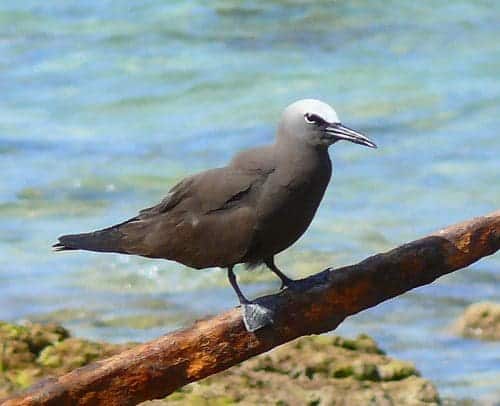
This sanctuary is also a significant site for bird conservation. The diversity of bird life here is not only a delight for bird watchers but also an important indicator of the health of the marine environment.
Night Camping on a Deserted Island: Adventure Under the Stars
Organized by local tour operators, night camping on a deserted island in Lakshadweep is a magical experience. It’s a chance to disconnect from the modern world and reconnect with nature. Sleeping under the stars, with the sound of waves as a lullaby, is an unforgettable experience. These camping adventures are conducted with a strong emphasis on eco-friendliness and respect for the natural environment. It’s a perfect blend of adventure and sustainability.
Dancing with the locals
As a highlight of your visit, engage with the local communities and revel in the diverse folk dances like Kolkali, Parichakali, Attom, Daffumuttu, and Ulakkamuttu. Each island, especially Minicoy with its distinct language and customs, offers a unique experience. Don’t miss the opportunity to participate in traditional fairs at Kalpeni Island, where the lively folk dances provide an authentic glimpse into the rich culture and traditions of Lakshadweep.
Underwater Exploration: Discovering Shipwrecks
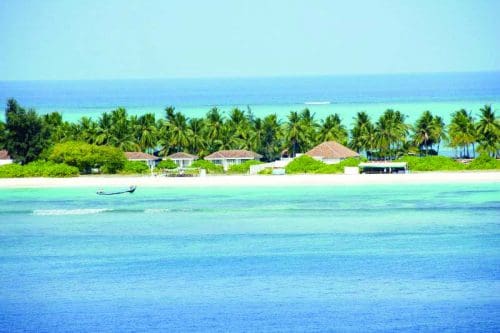
The recent discovery of a shipwreck near Bangaram Island has added an exciting new dimension to Lakshadweep’s underwater exploration. This discovery has not only piqued the interest of history buffs and adventure seekers but has also shed light on the maritime history of the region. It’s an opportunity for divers to witness a piece of history frozen in time, surrounded by the abundant marine life that has made the wreck its home.
Culinary Delights: Signature Dishes and Local Delicacies
The cuisine of Lakshadweep is a tantalizing fusion of Keralite influences and unique island flavours, reflecting the archipelago’s geographical location and cultural heritage. This culinary landscape is not just about the dishes themselves, but also about the traditional methods of catching and preparing seafood, deeply intertwined with the local lifestyle.
One of the traditional methods of fishing in Lakshadweep is the pole and line method, particularly for catching tuna. This eco-friendly technique involves using a fishing pole with a line and hook, baited with live fish. It’s a sustainable method that avoids by-catch, ensuring that only the targeted species are caught. Net fishing is also commonly practised, where fishermen use different types of nets depending on the species they are targeting. This method often involves teamwork and a deep understanding of sea and fish behaviour.
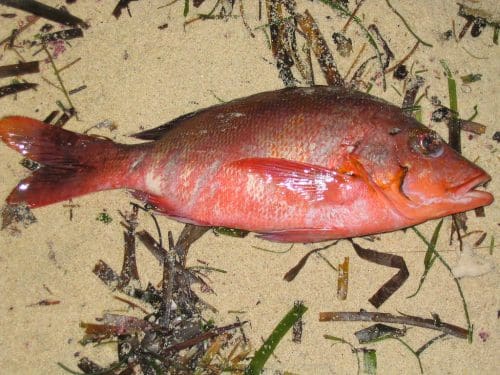
A traditional method of preserving fish in Lakshadweep is sun-drying. Fish such as tuna are cleaned, salted, and then dried under the sun. The dried fish has a prolonged shelf life and can be used in various local dishes. Grilling fish over coconut husks is another popular method of preparation. The coconut husks impart a unique smoky flavour to the fish, enhancing its natural taste.
Moplah cuisine: This type of cuisine is deeply rooted in the cultural tapestry of Lakshadweep, presents a treasure trove of time-honored recipes. This flavourful culinary tradition melds Arabic, Malabari, and native influences, crafting a unique gastronomic experience. Signature Moplah dishes such as Biriyani, Pathiri, and Mutton Curry enchant the palate with their rich spice blends and fragrant herbs. Both locals and visitors affirm its vital role in defining the gastronomic identity of Lakshadweep.
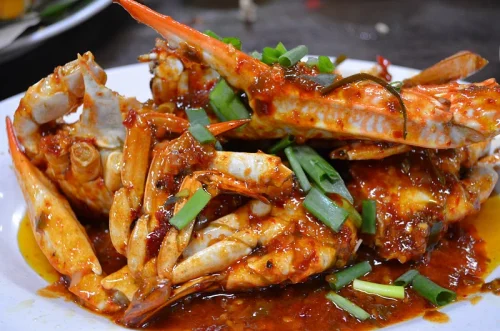
Octopus Fry: A local speciality, the Octopus Fry is a testament to the islanders’ skill in seafood preparation. Freshly caught octopus is marinated in a blend of local spices and then fried to perfection, creating a dish that is tender on the inside and crispy on the outside.
Kallummakaya curry: This delectable seafood dish from Lakshadweep is a culinary delight. This dish features mussels simmered in a savoury blend of coconut milk, aromatic herbs, and curry leaves. Its flavour profile expertly harmonizes tanginess with a hint of spice, reflecting the region’s abundant coastal essence. Ideally paired with steamed rice or appam, this exquisite curry is a must-experience for visitors to Lakshadweep, offering an authentic taste of this seaside haven.
Coconut Rice with Spicy Fish Curry: Coconut Rice, a staple in Lakshadweep, is often served with spicy fish curry. This dish is a decoction of flavours, with the sweetness of coconut perfectly complementing the spicy and tangy fish curry. The fish used in the curry is typically caught by local fishermen, ensuring freshness and quality.
Mus Kavaab: This is a delectable dish prepared using boneless fish, known locally as ‘mus’. This fish is first marinated in a paste of ground coconut, turmeric, chili powder, coriander powder, cloves, and cardamoms, infusing it with rich flavors. The marinated pieces are then cooked to perfection with sautéed onions and seasoned with aromatic curry leaves, cherry tomatoes, and a pinch of salt for a perfect blend of taste.
Squid Fry: Squid in Lakshadweep, is a tropical gem, that stands out as a culinary masterpiece. In this local favourite, the squid is expertly cooked to achieve a balance of crispiness and tenderness. A blend of diverse spices is used to season the dish, infusing each mouthful with a burst of flavour.
Layered Rice Bread: Lakshadweep boasts a scrumptious delicacy known as adukku pathiri, a layered rice bread that’s a true culinary delight. This savoury dish is crafted from rice flour, coconut, and a blend of spices. During its preparation, thin sheets of rice dough are carefully layered and then baked until they achieve a golden-brown hue. Paired with curry or chutney, adukku pathiri is a must-try speciality that offers a unique taste of the region’s distinctive flavours.
Fresh Tropical Fruits: The islands are also rich in tropical fruits like papaya and water apple, which are often consumed fresh or used in desserts. These fruits not only add a sweet touch to the local diet but also highlight the agricultural diversity of the islands.
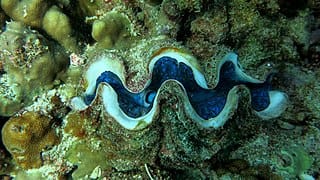
Curries and Stews: Seafood curries and stews are staple elements of Lakshadweep cuisine. These dishes are made with a variety of local spices and coconut milk, giving them a rich and creamy texture. A unique and aromatic culinary creation is known as kudukka. This dish is a delightful blend of fresh fish, coconut, traditional spices, and other locally sourced ingredients, showcasing the island’s rich gastronomic culture.
Lakshadweep’s cuisine is a delightful experience for the palate, offering a blend of flavours that are as diverse as the islands themselves. From the freshest seafood prepared using traditional techniques to the sweet bounty of tropical fruits, the culinary landscape of Lakshadweep is an integral part of its cultural fabric.
The best time to visit Lakshadweep
The ideal time for a vacation to Lakshadweep is from October to mid-May. During these months, the climate is agreeable and perfect for engaging in various water sports.
Lakshadweep is a rare gem in the vast Indian Ocean, a place where nature’s beauty remains unmarred and the pace of life is dictated by the rhythm of the sea. It offers a tranquil escape for those seeking to experience the unaltered charm of a tropical paradise, far from the clamour of the modern world. Lakshadweep is not just a destination; it’s an experience, an opportunity to connect with a way of life that’s remained unchanged for centuries.
In Lakshadweep, every grain of sand, and every wave that laps the shore, tells a story of harmony, beauty, and a deep-rooted respect for nature.
Read More: Latest



